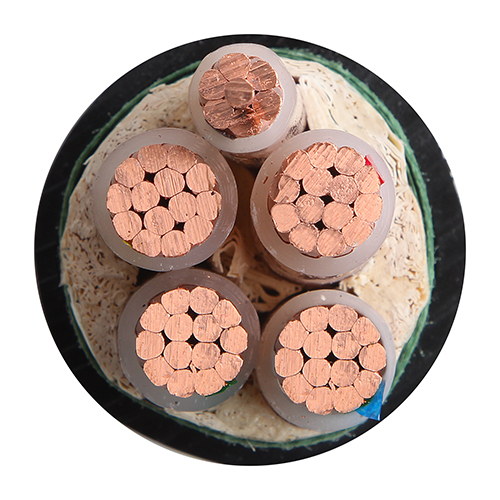
There are several tips for identifying inferior insulated wires:
1.1 Look at the printed words on the label and the insulation skin.
If there are typos or prints of different shades and ambiguous words, attention should be paid.
1.2 Using the fingers to insulate the outer skin, some inferior insulated wire sheaths are easy to fade, especially the red line will have this problem.
After the smashing, the color of the line on the finger or the word on the printed line is erased.
Generally speaking, it is inferior quality.
1.3 Using the nails to cut and smash the outer skin, it is generally inferior to the line that can be drawn down and smashed down.
1.4 Repeatedly bending the insulated wire, the inferior wire insulation layer is generally poor in material, and the insulation layer will break after bending for 3 to 4 times.
1.5 Ignite the insulation layer, which is inferior to the spontaneous combustion after leaving the open flame.
1.6 Look at the core color, the inferior line color is gray and has no metallic luster.
1.7 In the package length, generally 100 meters per tie or circle, the national allowable error is ±0.5%, the inferior wire length is only 95 meters, or even less.
Some are misleading in the package on the basis of "code".
1.8 If it is still undetermined by the above 7 methods, it is also possible to measure the outer diameter of the insulated wire and the core diameter.
The measured values differ greatly, basically the inferior insulated wires.
(Note: there are many bad manufacturers at present, the conductors are not enough cross-section. Increase the thickness of the insulation or sheath to reach the entire outer diameter of the wire to deceive the user).
At present, domestic technology or raw material problems can only ensure that the insulation capacity of halogen-free low-smoke flame-retardant wires is not damaged by high temperature and humid environment, instead of radiation-crosslinked halogen-free low-smoke flame-retardant wires.
Even after the warm water test, problems have arisen in design engineering applications.
In 2005, after the non-irradiation cross-linked halogen-free low-smoke flame-retardant wires used in a civil engineering project in Nanjing were laid in a humid environment, the faults of insufficient insulation strength of multiple lines could only be replaced.
There are many design institutes in China.
For example, the Beijing Architectural Research Institute's Olympic project, Beijing West Railway Station underground shopping mall, Guangdong Science Center main building, etc.
Shall stipulate that non-irradiated and cross-linked halogen-free low-smoke flame-retardant cables shall not be used in the project.
Because non-irradiated cross-linked halogen-free low-smoke flame-retardant wires are particularly easy to absorb water (thermoplastic halogen-free low-smoke materials use a large amount of AL(OH)3 or Mg(OH)2), according to the National Wire and Cable Testing Center experiment: Non-irradiated cross-linked halogen-free low-smoke flame-retardant wires have a 100-1000 times lower insulation resistance after warm water experiments.
Therefore, it is very simple to identify such wires. Is it necessary to see if the production company has an irradiation cross-linked cable production line?
Identifying such inferior wires, the mica tape should be identified on the basis of ordinary wires.
3.1 Generally, a 2-layer mica tape is used for wrapping, and the overlap ratio is about 50%.
3.2 The quality of the mica tape is also critical. It is gently rubbed by hand. If there is powder, it is inferior.
3.3 Burning mica with flame, if the flame passes through the mica tape, it is a poor quality fire-resistant wire.
Power P=I2×R where: I——current R——conductor resistance
R is inversely proportional to the cross section S of the conductor.
That is to say: the inferior wire cuts the material on the conductor section, which not only causes the wire conductor to overheat and the insulation aging. Thereby causing the danger of electrical fire and loss of electric energy.
For example, if the cross section is only 90%, then 10% more power is consumed than the conductor of the standard cross section.
In short, if the use of inferior wires, it will produce:
1 Insulation is easy to breakdown or premature aging, resulting in leakage.
2 Wire heating is very powerful.
3 Electrical energy consumption.
4 Easily lead to fire, causing human and animal casualties.
As the saying goes, "a penny, a share of goods", I hope that consumers must be cautious when choosing to purchase wires!
In fact, you are not only purchasing products, but you are also purchasing a type of safety and insurance.